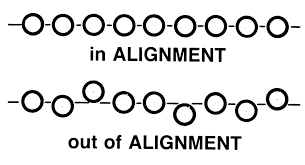Token design is key to your crypto gains
In my last post I honed on a misalignment of incentives between the entrepreneurs / developers behind a project and the token holders / investors. Let's recap what the goals of these two camps should be:
- Project team: continue delivering their project and expanding its impact. It accomplishes this through developing an awesome product that real world people and enterprises use. Increase usage leads to increased financial gains.
- Token holders / investors: maximize financial return, forsaking alternative investment vehicles.
Utility tokens as financial vehicles inhibit projects
Regulation is coming whether you like it or notProjects will need to seriously consider separating fundraising and utility tokens. I believe regulators will start putting down the clamps. This episode of the unchained podcast discusses the likelihood of oversight. Today many "utility" tokens are traded in the hope of financial gain. If the purpose of the token was used for financial gain, then that's clearly a security. It will fail the Howey test. Basically, it it walks like a duck, talks like a duck, it's a duck.
Velocity is hard to master
Long term investors artificially inflate the price of the utility token. Consider the example of a dApp called Jam with a token called JamCoin (JCN). The JCN token is used to purchase music directly from a music creator. The music creator submits their content to the network. Someone comes along, listens to the music, and pays JCN to the music creator directly. If a large portion of token holders own JCN simply to watch it increase in price then there are fewer JCN tokens in circulation. That's good for JCN hodlers' right? Lower supply means increased price?
Let's take this example to two extremes.
First the extreme example. All token holders sit on their JCN. No one is trading. Every token holder looks around the market and believes they're intelligent for holding tight because others will simply sell their tokens. Over time the value of their JCN will skyrocket to the proverbial moon. But what happens is velocity of that transaction is zero and the network is not used. If no one is paying for music on JamCoin with JCN then music creators will go elsewhere to get paid for their services. The network is worthless because its token economics is geared towards speculators and not users.
The second example features a market where every token is transacted with great velocity. Music is sold left and right. Using the equation of Money Supply we remember that velocity is inversely proportional to price. Higher velocity relates to lower price. This is insane. The network is valuable, proven by the numerous music artists and buyers. The financial reward should be high and distributed to the token holders. Instead, they're subject to the phenomena of economics and are bag holding.
Decoupling certain rights with multiple tokens
Smith and Crown features a nice little writeup on the different token varieties. These range widely from payment tokens (facilitate trade) to governance (influence project direction) to block creation (staking to secure the chain). Sia designed two tokens: SiaCoin (SIA) to utilize their storage network, and SiaFund to earn SiaCoin from network fees. This is the token economics they designed but there are plenty of other solutions.
Steem for example has three tokens. There's Steem (STEEM), Steem Dollars (SMD), and Steem Power (SP). A writeup of what each one does is here.
- Steem (STEEM) is a payment token if I used Smith and Crown's breakdown. You can trade for Steem Dollars or Steem Power.
- Steem Power (SP) is a contribution token It allows SP holders to have certain roles on the network.
- Steem Dollars (SMD) are tradeable outside of the Steem network. You can cash out into Bitcoin on exchanges.
Evaluating Projects
There are several questions to ask before arriving at token economics to evaluate a project but let's focus on aligning incentives to maximize goals on both sides. The team wants to build a product with great impact. As a result the team reaps strong financial gains. The investors want to own tokens that will reward with a high return on investment. In between these two camps are the network's users.A thoughtful token ecosystem should define proper incentives. If the network requires nodes to validate blocks and secure the chain it should create incentives for that purpose. Transactions on the network require a thoughtful payment method. Investors looking for financial gains should have access to the project's financial upside without necessarily impacting the network transactions.
I encourage you to think critically through token design and add it as a cornerstone to your evaluation of a project.
Question toolkit:
- What type of token(s) is/are this/these?
- Who are the network participants?
- What are their goals?
- Is the token designed to maximize all of their goals? Your financial goals?
- Where is there cause for conflict?
- New models for utility tokens by Kyle Samani of Multicoin Capital
- Steemit article by hisnameisollie
- Smith and Crown token rights
- Velocity of Tokens by James Kilroe of Newtown Partners
- Managing Velocity by Eden Dhaliwal of Outlier Ventures
